The Lie: How Much Ammo Do You Need?
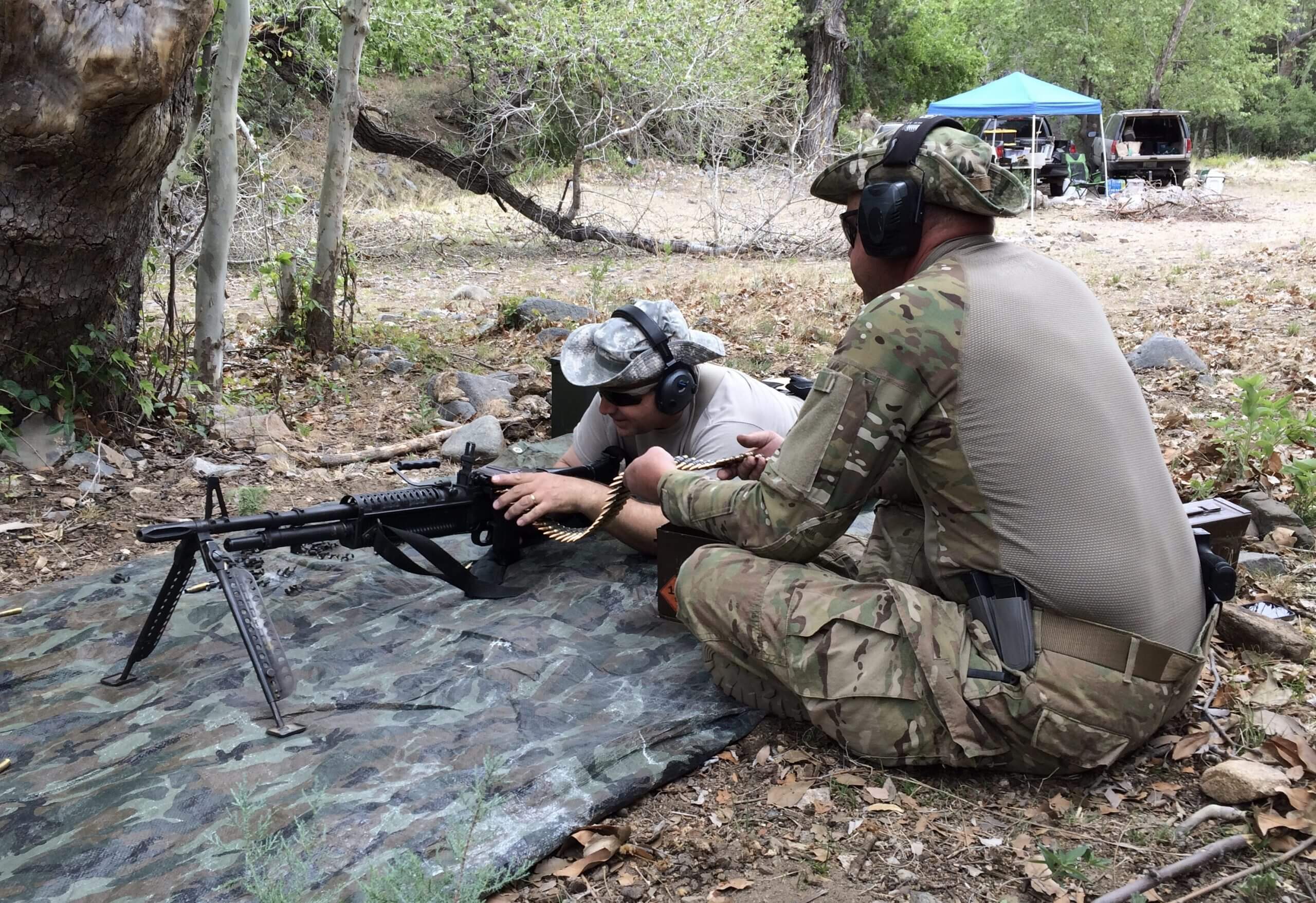
Each soldier was issued forty rounds of ammunition because neither an offensive action was planned nor a tactical defense anticipated. Usually cavalry units entering combat would have had several times that amount on their persons or in saddlebags.
–Mark Miller, Hollow Victory: The White River Expedition of 1879 and the Battle of Milk Creek, p. 53
There are a lot of lies out there. The one I’m talking about here is a meaningless statistic that is stated as an average. While statistics that are conscientiously collected, properly analyzed, and most importantly, understood, can be useful for planning purposes, we need to be wary whenever we hear words like “average.”
Here’s an example:
A homeless panhandler’s average annual income is $500,000.00.
Not including welfare, disability, handouts from kind people, or “stimulus” checks.
Does that mean you should never slip the guy with the cardboard sign a few bucks? Of course it doesn’t. Whether he actually needs it or not, and even if he’s going to waste it feeding his habit, sharing your hard earned cash with him is good karma for you. I may be quoting The Book out of context, but “Ye have merely to ask, and ye shall receive.” It’s even possible that he’s a veteran, like his sign says.
Besides, $500,000.00 is his AVERAGE income. His ACTUAL income is probably closer to zero.
How did I arrive at that average? I’ll admit I’m not good with statistics–I loved Probabilities and Statistics so much in college, I ended up taking it twice–so I kept it simple. I added the panhandler’s income to a millionaire’s, and divided by 2. According to my calculations, the millionaire’s average income is also $500,000.
I know definitions are important with statistics. I kept that simple as well. I defined a panhandler as someone whose income is exactly zero (which is probably not true), and defined a typical “millionaire” as someone who earns exactly $1,000,000.00 annually. I left out people like you and me and Bill Gates, who make something other than zero dollars or 1 million. Way too much math. Besides, people with low incomes often get money “off the books,” and millionaires hide their income in off-shore accounts, so it would be impossible to get “real” numbers anyway. As it is with gunfights.
“THE AVERAGE CIVILIAN GUNFIGHT”
A while back, I heard a kid talking about what he called “the average civilian gunfight.” I call him a kid, but he’s legally an adult (if only barely). Great kid, by the way: Eagle Scout, college ROTC, very articulate, that rare really good kid that parents dream of. While he was going to school, he worked nights at a sporting goods store.
He doesn’t know it, but while extolling the virtues of pocket pistols, he perpetuates The Lie. The one I told when I was selling revolvers and single-stack Government models at the Marksman Pistol Institute back in the 1980s.
It’s not the bold-faced, intentional kind of lie. It’s the insidious, statistical kind of lie the teller actually believes. Remember, statistics don’t lie, but people lie with statistics, all the time. And “average” does not mean the same thing as “typical,” although we tend to conflate the two.
The Lie is this: Good guys and gals fire an “average” of three rounds in a gunfight.
It’s actually part of a bigger generalization, which few armed citizens wrap their brains fully around, that the so-called “average gunfight” is “three rounds at three feet in three seconds.”
DISTANCE
Regarding distance, “gun people” never train enough for the close-in fight, which is way more common than most people understand. As Randy Harris observed, “Nobody gets raped or robbed from across the street,” so it’s good to practice bent-elbow / target focused shooting up close. That said, the last gun battle I was involved in, most of the combatants were 35 meters or so apart. I was at about 70 meters for much of it. But distance (and more importantly, movement) are subjects for another day.
DURATION
Likewise, we can talk about duration in another post. Suffice it to say that we can expect your fight to be high intensity, and things will happen very quickly, regardless of its actual duration.
“CIVILIAN”
One thing we do need to address though, if we’re talking about how many bullets you need, is that phrase, “the average civilian gunfight.” Like I said, definitions are important with statistics, so we need to figure out whether that qualifier “civilian” means more or less bullets than the “average police gunfight,” from which we get most of our numbers.
I don’t really know much about what it’s like to be a civilian. Most (but not all) of my adult life I’ve been on active duty with the military or in law enforcement. I have, however, responded to civilian shootings, and spent a considerable portion of my own life off duty. When I was a rookie cop, my friend Scott (a federal agent) asked me, over coffee, “Do you need to carry more ammo on or off duty?”
Hmmmmm . . .
My friend Jay R, an officer on CPD, once told me that he wanted a bigger gun with more, bigger caliber bullets when he was on duty, “getting paid to stick my nose in other people’s business, when they’re not having their best day.”
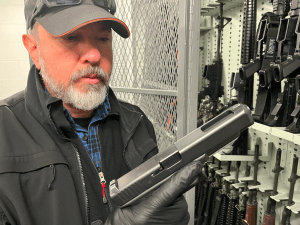
I figured that on duty I was tasked with hunting down criminals a civilian might be well advised to simply identify and give a good direction of travel about to 911. Off duty, I too would likely “be a good witness,” unless something serious was taking place in front of me.
I guessed I would need more ammo on duty.
“But think about it,” Scott countered. “ON duty, you have a full sized pistol, two spare mags, a shotgun in the rack,” (that was before patrol rifles), “OC spray, a baton,” (tasers were mostly science fiction then), “body armor, spare magazines, a couple sets of handcuffs, a cruiser with a cage and locks to stuff them into, and most importantly, a RADIO, so you can call lots of friends who also have all of those tools.”
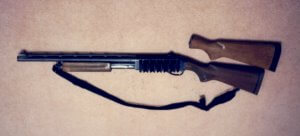
“OFF duty,” Scott continued, “what do you have? A pistol and maybe a spare mag? If you blunder into a bad situation, that’s ALL you’ve got.”
“Yeah,” I said, “but unless something really heinous happens–“
“The ONLY reason to carry a gun in the first place, on or off duty, is in case something heinous, or likely to become heinous, happens. Only, off duty, YOU’LL BE BY YOURSELF. Maybe with your family to protect. What you carry on your person is all you’re going to have.”
Suddenly, it made sense to me.
Pretty smart guy, that Scott. He later rose to become a deputy director in his agency.
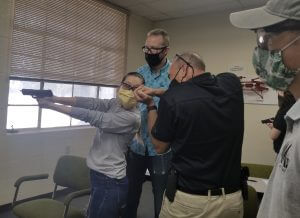
It’s true that civilians are not required to chase bad guys down and apprehend them. But the most important difference between a law enforcement officer and a regular citizen is not occupational, it’s tactical: little or no backup. “Yo-yo,” as the head of GEMA, the Georgia Emergency Management (and Homeland Security) Agency said, “Yo on yo own.”
So, maybe the so-called civilian should find out how many rounds are used in the so-called “average” police shooting, and then carry more than that.
THE “AVERAGE” POLICE GUNFIGHT
When I was a civilian (actually an inactive reservist), working at that pistol range, the law enforcement stats I quoted (as if they were carved on those broken tablets in the Ark of the Covenant) were from a 1980 law enforcement textbook called Street Survival. It’s still a great primer on tactics and the survival mindset, with a lot of relevant info that has stood the test of time. Some of it has not. On page 31 of Street Survival, it says “You and the suspect together are not likely to fire more than a total of 3 shots, whether the situation is an ambush, an armed robbery or a family fight.” The publishers of Street Survival sourced those numbers as coming from a 1977 article by Ed Lovette, in The New Mexico Lawman, called “Carrying Duty Ammo for Revolvers.” I don’t have access to that article, but I’ve read Lovette’s book The Snubby Revolver.
Ed Lovette is a huge fan of the “snubbies,” short barreled 5 and 6 shot revolvers. In The Snubby Revolver, Lovette says “Reloading is necessary in about 10 percent of the documented gunfights involving revolvers.” (p. 69) He does not say where he gets that information, although elsewhere in the book (p. 27), Lovette references the NYPD’s SOP 9 study (though not by name).
SOP 9, aka s. 69
Beginning in 1969, the New York City Police Department began collecting detailed data following officer-involved shootings as a standard operating procedure (SOP). They still collect the data, but when SOP 9 is quoted, it often refers to the initial study which ran from 1970 to 1980. That SOP 9 study examined incidents in which 49 officers were killed (5 officers, >10% of the total, were killed in plain clothes, by other officers), 256 other officers were shot, and 216 officers were wounded by edged weapons.
SOP 9 concluded that the AVERAGE (there’s that word again) number of rounds fired by NYPD officers was 2-3 rounds. The SOP 9 study also referenced a 1967 study by Los Angeles PD which said the AVERAGE number LAPD officers fired was 2.6 shots.
RELOADED REVOLVERS
In the 1970s, NYPD officers only reloaded in 6% of the incidents. Seems like a low number, but consider two things:
First, it’s harder to reload a revolver in a fight than it is to reload a magazine fed system. Period. The fact that Jerry Miculek reloads his revolvers far faster than I’ve ever reloaded my Glock 19 doesn’t negate that general principle, on which we can all agree. Don’t get me wrong; I love revolvers, but there are simply more moving parts to revolver reloads.
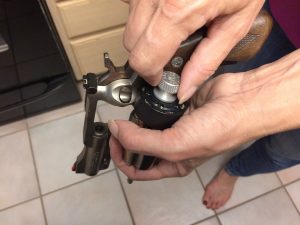
Second, 6% of 6000 is 360. That means that in 360 incidents, the officers DID need more than 6 shots, or assumed they were about to need more than 6 shots, AND had (or took) the time to reload, which is no small feat with a revolver in a fight. Their “average” might have been 2-3 shots, but their ACTUAL was 6 or more.
SELF-LICKING ICE CREAM CONES
In 5640 of the incidents averaged together, a maximum of 6 shots were fired, because THE OFFICERS WERE ALMOST ALWAYS USING REVOLVERS. 60% of the incidents involved a duty (full sized, 6 shot) revolver, 35% of the incidents involved a “snubby” (usually 5 shot) revolver, and only 5% of the cases involved a shotgun or auto pistol. For years, those “2-3 AVERAGE shots per gunfight” numbers were used to resist transition to auto pistols, because “officers hardly ever fire more than 6 shots, so why would they need more?”

This is what we call a “self-licking ice cream cone.” We create conditions in which an officer is hardly able to fire more than 6 shots, however badly she or he wants to, and then say that “nobody does, so why would they need to?”
WHAT REALLY HAPPENED?
Remember when I quoted Ed Lovette saying “Reloading is necessary in about 10 percent of the documented gunfights involving revolvers”? That could mean one of three different things:
1) In the documented revolver shootings Lovette read about, 90% of the fights ended after the good guy or gal fired 6 shots or less (Lovette’s book was from 2002, before higher capacity centerfire revolvers were even remotely common; they are still not very common today). OR,
2) In the documented revolver shootings Lovette read about, the good guy or gal was only ABLE to reload 10 percent of the time. If a cop empties his revolver into (or AT) somebody, but the bad guy is not impressed, and jumps on the cop before s/he can reload, and the rest of the matter is resolved (for good or ill) hand to hand, that does NOT mean that more rounds weren’t necessary; it means they were not available. OR,
3) The documented cases could have been, and probably were, some combination of 1) and 2) above.
The only way to know for sure is to examine each case individually. People call that “case study research” when it supports their position, and “anecdotal evidence” when it does not.
INCREASING SAMPLE SIZE CAN LOWER THE AVERAGE
I admit my sample size (only 2 individuals) was somewhat small when I figured out the beggar’s average income of half a million bucks. The small sample size gave me a pretty high margin of error. Bigger sample size makes for more reliable stats. Or does it?
To see just how murky these numbers can get, you should read an article by Thomas J. Aveni, M.S., excerpted in the 2003 issue of Law & Order magazine, entitled “Officer-Involved Shootings: What We Didn’t Know Has Hurt US.” Aveni examined data compiled by several different departments (similar to, but with different methods and definitions from, NYPD’s SOP 9) as well as data from NYPD.
Not surprisingly, the numbers went up after cops got high capacity autos in the 1990s, though not as much as you might think.
Factors that affect the numbers can include defining a gunfight as “each separate incident in which firearms are discharged,” INCLUDING THOSE BY THE SAME INDIVIDUALS, ONLY MOMENTS APART.
Shootings are still, thankfully, relatively rare. In order to increase the sample size, and thus, the “accuracy” of her or his numbers, a statistician might define an incident in which you trade bullets with a bad guy, then you duck behind a car, then the bad guy runs around the other side of the car and shoots at you, so you trade bullets again, as TWO separate shooting incidents. Obviously, the “number of rounds fired in each incident” is going to be about half of what you really needed to put the guy down.
One study by the Los Angeles County Sheriff’s Office excluded all shootings in which officers fired but missed entirely. LA County also excluded all shootings by LAPD, a significant number of the law enforcement shootings that took place in their county. Which shootings are included, and which are excluded, seriously affects the resultant stats.
PER OFFICER vs. PER INCIDENT
If 2 or more cops shoot at the same bad guy, they may call that 2 or more shootings to increase (and standardize) their sample size, even though it was part of the same incident. After all, they were trying to define what an individual officer might expect to need in a gunfight. The tactics, behavior, and performance of officers working on a team to apprehend bad guys do not translate one-for-one with the things a lone civilian will need to do to survive a lethal assault.
Some of Aveni’s research was able to compare shots per officer to shots per incident. Say you and another officer and I respond to the same disturbance. A bad guy on meth attacks us. You fire 6 shots, Sally fires 4 shots, and I fire 3 shots. We each fire an average of 4.33 rounds before the bad guy goes down. It took 13 rounds (“per incident”) to put the bad guy down. If you are a lone civilian fighting the same bad guy, you will need to deliver all 13 of those rounds yourself, with what you have on your body (or within arms’ reach) when the fight comes to you. This is true whether we hit him with every shot (which almost never happens), or with any given percentage of hits, as long as the civilian and the cops miss and hit at the same rate.
MULTIPLE OFFICER INCIDENTS
Aveni also examined what he called “The ‘Bunch-Shooting’ Paradox.” When multiple officers respond to the same incident, the average number of shots per officer increases by over 100%. Aveni proposed numerous psychological reasons for this, and “sympathetic” fire is certainly a thing, but based on my 3 decades in this biz, the main reason cops fire more in multiple cop incidents is probably that if the problem requires multiple officers, it may be harder to solve kinetically.
To understand what I mean by that, compare lone officer incidents to multiple officer incidents with the following two examples that happened within hours of each other:
MIT Officer Sean Collier was sitting alone in his patrol car when the Boston Marathon bombers ambushed him to steal his gun. They had one pistol, but wanted one more before going on their planned death spree in Times Square. They executed Collier before he even knew what was happening, but were too stupid to figure out how to get Collier’s Smith M&P out of its holster, before panicking and fleeing. Collier got zero rounds off, lowering that “average shots fired per officer” number yet again.
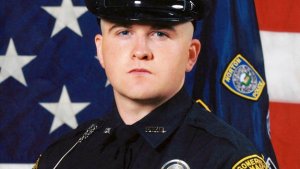
The bombers went mobile. A massive manhunt ensued. When Watertown Police Officer Joseph Reynolds approached to within 5 – 10 yards of them, the older brother opened fire on him. Reynolds reversed his cruiser out of the kill zone about 30 yards (total distance then 40 – 45 yards) before returning fire. Responding officers for the most part engaged from extended range, more like 75 – 80 yards (except Sgt Jeffrey Pugliese, who flanked around the other side of some houses and closed with the suspects) while one of the bad guys shot their one pistol, and the other bad guy hurled IEDs at the cops. Extended range means more misses, which translates into more rounds fired (in the Watertown shootout, the cops fired 200 or more rounds, 7 of which struck the tango who had the pistol). But, remember, “the average police gunfight” is 3 shots, right?
While we’re on the subject, that gun (and bomb) fight took place on Laurel Street, in a residential Watertown neighborhood. Those 250+ bullets flew into the walls of homes, and it’s a miracle no civilians were injured (one cop was hit by friendly fire).

A resident took pictures of the bombers, as they shot at police, from his 3rd floor window. FROM ABOVE AND TO THE SIDE. In the military we called that a perfect “flanking, enfilading” position, with far fewer shoot-through safety issues than those faced by the cops, who were at ground level. We call that a “vertical L.” If that fight had taken place in Texas or Arizona, rather than in unilaterally disarmed Massachusetts, any pictures would more likely have been video from a GoPro mounted to an AR-15. The fight would have ended a lot sooner, and far fewer bullets would have flown through that heavily populated neighborhood, endangering all and sundry.
NEGLIGENT DISCHARGES LOWER THE AVERAGE
SOP 9 looked at 6000 shootings, including negligent discharges (NDs). The number of accidental shootings “averaged about 40” between 1970 and 1978; I assume that meant an average of 40 NDs per year. Their summary didn’t mention the year 1979. Could’ve been there were no NDs in ’79, but if I were a jaded retired cop–oh, wait, I am–I’d guess there were considerably more NDs in 1979, which was embarrassing, so they left that “statistical anomaly” out of the summary (full disclosure: that’s strictly conjecture, on my part). Considering there were 28,000 cops on NYPD, who handled 4000 non-police firearms every year, 40 NDs per year is not as horrific as it looks. BUT NDs PROBABLY WORKED THEIR WAY INTO THE “AVERAGE” NUMBER OF SHOTS FIRED PER SHOOTING.
We can assume that unless you are handling an Uzi, a negligent discharge will result in only one shot (and a loud ringing in the ears) at which point you are likely to take your finger off the trigger. That would be roughly 320 single-shot incidents averaged in with the incidents of intentionally shooting at bad guys, reducing the “average shots per incident.”
SUICIDES LOWER THE AVERAGE
Some studies may include officer suicides in their shooting data. Far too many cops smoke their own guns, to this day. Unless you have dirt on a powerful politician, or you owe money to the Mafia, your firearm assisted suicide will probably involve only one shot. When one-shot-per-incident suicide numbers are averaged in to the total shooting statistics, the “average” number of shots per shooting goes down.
AMBUSHES CAN LOWER THE AVERAGE
On July 7, 1998, Border Patrol Agent (BPA) Ric Salinas was dispatched to assist a local county with a manhunt for multiple homicide suspects. He arrived on scene and stepped down from his patrol rig to get briefed on the particulars. He was shot in the back of the head before he even knew he was in a gunfight.
The same thing happened to Lakewood, WA Officer Tina Griswold as she sat at a table in the Forza Coffee shop on 29 Nov 2009. Her Sergeant, Mark Renninger, only barely had time to realize what was going on, before he too was executed at close range. When incidents in which officers get zero rounds off are included, the “average” of shots fired go down.
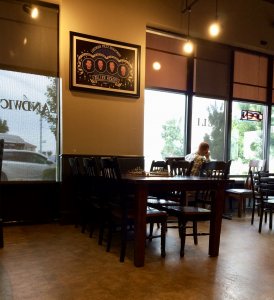
We’ve all seen that cartoon of the dragon leaning back against a tree, picking its teeth with a lance, surrounded by scattered pieces of a knight’s armor. We can talk about situational awareness and a host of other factors, but the fact is that “sometimes, the dragon wins.”
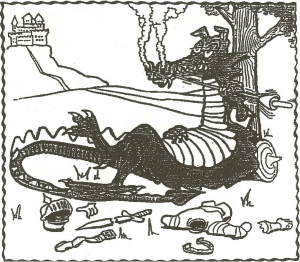
An “average” is a way of quantifying a spectrum with zero rounds fired on the low end, and (very) roughly twice the average number on the other end. If you’re planning on being on the low end of the spectrum, there’s no need to carry ANY ammo, or a gun, for that matter. If you’re planning on NOT being shot before clearing leather, you might want to carry enough ammo to reach the OTHER end of the spectrum.
HITS COUNT
“T-bone,” the M-60 gunner from my Desert Storm fire team, is a cop in St Louis. One of the incidents T-bone responded to was an active shooter at the ABB manufacturing plant, on 07 Jan 2010. Stephen Sharp II, a civilian employee at ABB, was trying to drag Terry Mabry, a coworker who had been shot through the calf, to safety while the killer pursued them in the parking lot. Taking fire from an AK, Sharp dropped Mabry to reach for the Walther .380 in his truck. Sharp emptied his PPK/S (firing between 6 and 8 rounds at the bad guy) without harming the killer. AFTER RUNNING OUT OF AMMO, Sharp attempted to flee, but was gunned down. Bet he wished he had more ammo for his average civilian gunfight.

(Squinting, in a hoarse Clint Eastwood whisper): I know what you’re thinking. Did he fire 8 shots, or only 6? Investigators found 6 cases from Sharp’s pistol. There might have been one or two they didn’t find. But none of that was what you were really thinking.
You were really thinking that it doesn’t matter how many rounds you have, if you miss with every one. Conversely, if you hit with every round you fire, one or two should do it, right? Well, maybe…
Regarding misses, true dat. “When there’s lead in the air, there’s hope in the heart,” and Grossman’s “Bigger Bang Theory” notwithstanding, hits have more effect on the outcome than even near misses. Sharp couldn’t blame an inequity of training opportunities, as Sharp’s opponent had only purchased his AK and shotgun the day before.
But it’s easy to sit behind this computer in this airconditioned room and talk about trigger manipulation. I’m not crouched behind my truck in freezing temperatures, being shot at by a madman with an AK and a shotgun and two pistols, who just pursued me across a parking lot as I half-hauled a wounded friend. We should all applaud Sharp for being the only one at the ABB plant (including the less “civilian” security guards) who shot back. I can only imagine Sharp’s despair after making the agonizing decision to leave Mabry, scrambling through fire to reach his truck alive, and taking some of the fight back to the killer, only to run out of ammo.
By the way, after trading bullets with Sharp, the bad guy went in the building and shot himself, which is typical of active killers when they meet ANY resistance, however ineffective. They move on.
I’m not advocating for more ammo so you can “spray ‘n’ pray.” Don’t plan on missing, but don’t expect to hit with every shot, either. It’s simply not likely that you will hit every time in the chaotic conditions of an actual–I mean, “average civilian”–gunfight.
That means you should carry enough ammo to incapacitate at least 2 (possibly 3) bad guys, PLUS a percentage more than that to account for misses.
HOW MANY HITS DOES IT TAKE TO PUT HIM DOWN?
Since the “Yo-yo” principle applies to most so-called civilian gun battles, the number of shots fired is not even the right number to look at. We should be asking about the number of hits it takes to stop a bad guy’s (much less two or three bad guys’) aggression.
On 03 Aug 2018, at the Southwest Regional Trauma (EMS) conference, I attended a lecture by Dr. Sydney Vail, MD, FACS, on Bullets and [terminal] Ballistics. Dr. Vail was Chief of Trauma Surgery, Surgical Critical Care, and Tactical Medicine for the Maricopa Integrated Health System. He also served as the Medical Director for the Arizona Department of Public Safety Special Weapons and Tactics Team (DPS SWAT). Dr Vail said that about 80% of the residents he worked with had never fired a gun, but were quick to judge the cops (or armed citizens who fired in self-defense) for shooting bad guys “too many times.”
Doctors are healers. It’s easy to understand why they would be unhappy about having to patch together a guy who looks like Swiss cheese. But, Vail emphasized, they were not there when the bad guy was on his feet, constituting a deadly force threat. There is simply no way to predict how many hits it’s going to take to put any given threat down.
The same Street Survival book that told me the bad guy and I would probably–combined–only fire 3 rounds, devotes several pages to incidents where bad guys took an incredible amount of damage and continued to kill good guys. Like, 20 or even 33 hits, and multiple shotgun wounds.
The older Boston Marathon bomber mentioned above was still on his feet after being hit 7 times. He shot about 56 rounds at the cops, until he ran out of ammunition on his person (he had another loaded mag in the car), or his Ruger jammed. He threw the pistol at Sgt Pugliese and was still in the fight when Pugliese and another cop tackled him. He kept struggling until his younger brother, who had also been hit, but not stopped, by gunfire, ran him over with a stolen BMW.

I’m no veterinarian, but on 26 Dec 2005, in Redington Pass, AZ, I treated a K9 that had been shot through the muzzle, its neck, its back, and 3 of its legs. I don’t remember counting the holes, but it was quite a few, from a rifle and two pistols. The dog lived, but had to be put down 2 years later because, for some reason, it had developed trust issues with humans.
The last bad guy I personally saw down in his own blood took 8 or 9 hits from 9mm and .40 JHPs before he stopped shooting. And that was ONE bad guy (we never found the two accomplices he allegedly had). According to SOP 9, when an officer was killed, more often than not there was more than one bad guy. When an officer was assaulted but survived, more than one bad guy was present about half of the time.
WHO ARE YOU PREPARING TO FIGHT?
When “experts” say your fight will probably only be three rounds, I guess the key word there is probably. The question, then, is which bad guy(s) are we preparing for?
Tens of thousands of times a year, when an armed citizen brandishes a gun (preferably a bigger, easier-to-see gun) at a bad guy, the bad guy chooses to leave and go victimize somebody else. No shots fired, no blood on the pavement, no jail time, no lawsuit. I have experienced this myself, as both a civilian and a cop (difference was, when I was a cop, the bad guys did not have the option of leaving). I know several civilians who’ve had the same experience. No sure way to know exactly how many times this happens; as with rape, many of those incidents go unreported, and don’t make it into the stats. But I’ve seen estimates over 60,000 times a year (which may seem unrealistically high, till you put that in perspective: the US population is 280,000,000, which means that only one citizen in over 4600 brandishes a weapon at a bad guy without firing annually). If you include those incidents in your sample, the average number of shots fired per incident is .000something. Close to zero, not three.
Most of the time, the bad guy is an opportunist, not a martyr. If you only plan to be ready for that kind of opponent, it’s much cheaper to just invest in one of those cigarette lighters that LOOKS like a gun.
But then there are those other kinds of bad guys. The dedicated kind. The kind you need a REAL gun for. The kind who call your bluff.
I suppose if Stephen Hawking had gone on a killing spree, I’d feel comfortable trying to stop his dastardly deeds with 3 rounds. If those failed to stop him (Hawking was a very determined guy), I could probably outrun his wheelchair. We’ll never know, because instead of a life of crime, Hawking chose to write really good books and do all that science stuff that I still don’t understand.
To understand how The Lie can kill us, it helps to remember what the late, great Louis Awerbuck told me: “If I’m going to be an exception to the statistics by being in a gunfight at all, I might as well count on being an exception to the other statistics as well.”
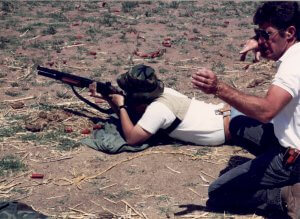
In addition to being one of the finest firearms instructors who ever lived (and a very funny guy), Awerbuck turned out to be prophetic. A few years later, I was involved in a gun battle where the round count ran well into triple digits. Distance and duration also well exceeded the “average” predictions. Not overseas; right here in the good ole USA.
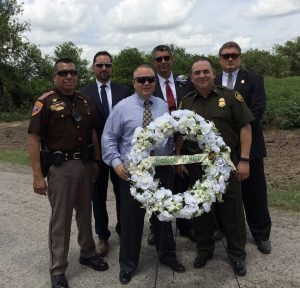
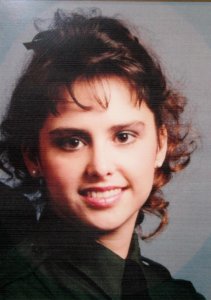
The guy in the brown and tan Cameron County uniform is Patrol Lieutenant Robert R. The first words Rob said to me, 20 years before this photo was taken, as we crouched beside a squad car next to mortally wounded Border Patrol Agent Susan Lynn Rodriguez, were “I’m down to two rounds.” Rob had started with forty-six.
And Rob was only one of several officers shooting back at the bad guy, who, if memory serves, was into his third 30 round AR magazine, and hit three LEOs, before he went down.
46 – 2 = 44 rounds, only slightly more than the “average of three” that guy selling you the pocket pistol says you’ll need.
MODERN POCKET PISTOLS
If you don’t want to be yet another victim of The Lie, it’s also instructive to understand what brought about the current plethora of smaller capacity pistols, because The Lie is perpetuated on behalf of the modern pocket pistol.
Palm-sized pistols like the Kahrs, and 5-shot revolvers like the Smith & Wesson J-frames, have been around for years. Great guns, but they are harder to control, often lacking enough grip for all of your fingers, and harder to hit with at any distance (which is usually–but only usually–not all that that important), than medium- or full-sized handguns.
For these and other reasons, pocket pistols were usually used as back-ups to larger handguns. Witness FBI Special Agent John Hanlon driving on with his S&W Model 36 snubbie after losing his primary during the bumper car rally that preceded the Miami gun battle of 11 Apr 1986 (that’s another incident which more than slightly exceeded the “3 round average,” by the way).
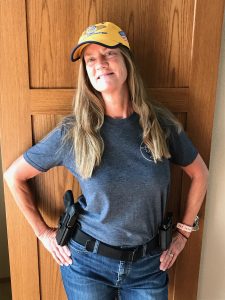 These days, every major manufacturer is cranking out tiny pistols like the Glock 43, Smith & Wesson Shield, and SIG 365. We like to think this is because more people are legally carrying concealed than ever before, and those single stack (or only slightly staggered) handguns hide better than a double stack Glock 19 or SIG P229. That’s partially true, but the real reason manuacturers are making those pistols is because any successful company needs to anticipate and stay ahead of marketing trends.
These days, every major manufacturer is cranking out tiny pistols like the Glock 43, Smith & Wesson Shield, and SIG 365. We like to think this is because more people are legally carrying concealed than ever before, and those single stack (or only slightly staggered) handguns hide better than a double stack Glock 19 or SIG P229. That’s partially true, but the real reason manuacturers are making those pistols is because any successful company needs to anticipate and stay ahead of marketing trends.
The writing on the wall sadly says that subsequent to the next election, or the one after that, or the one after that, somebody who’s perceptions of lethal encounters are as realistic as Joe Biden’s will preside over equally unrealistic majorities in both houses, and we Americans will be yoked with useless, ineffective, unenforceable restrictions on our God-given, human-taken civil liberties worse than Bill Clinton’s useless, ineffective, unenforceable “Crime bill.”
When (not if) that happens, we will be saddled with a nation-wide 10-round magazine limit (or some other equally arbitrary number, but 10 rounds is a good bet). There will be no point in lugging around a fatter Glock 19 when an easier to hide Glock 48 holds just as many rounds as you will legally be able to carry in the 19. And companies that aren’t already well established in the smaller pistol market will be out of business, till they can catch up.
The irony there is that small, concealable pistols, soon to be some of the only politically (and legally) correct guns there are in this country, were specifically the type targeted by the blatantly racist “Saturday Night Special” laws of the previous century–including the federal Gun Control Act of 1968, which forbade the importation of small pistols lacking arbitrary “target pistol” characteristics like a serrated surface on the trigger, or a thumb rest (seriously–this legislation is so stupid, you can’t make it up).
ADVANTAGES AND DISADVANTAGES OF POCKET ROCKETS
- Smaller pistols are much lighter to carry. Less ammo is less weight. Let’s face it: most Americans (including I) are lazy, and armed citizens are drawn from the same population.
- Pocket pistols are also easier to hide than a mid-size. John Bianchi’s dictum that it’s totally uncouth to let your concealed pistol be noticed is just as true today as when he wrote words to that effect in Blue Steel and Gun Leather.
- Shorter barreled compact and sub-compact pistols have less handle for the bad guy to hold on to when he’s trying to take it away from you, which is far more important than most gun owners realize.
- Pocket pistols also have less handle for YOU to hold on to than a mid-sized pistol, when he tries to take yours away.
- Less ammo is less ammo, in case you haven’t been paying attention to any of this post before now.
- Almost all pistols are short-recoil operated. Shorter slides have less “stroke” to get the same jobs done (extracting the empty case, ejecting it, stripping another from the mag, and stuffing it fully into the chamber) than a mid- or full-sized pistol. As a general rule (along with many other factors which can be more important), that makes pistols with shorter slides less reliable than their mid- or full-sized parents.
- A corollary of the previous disadvantage is that a shorter stroke means they either have to shoot a smaller cartridge or have a much stiffer recoil spring.
- Pocket pistols have less surface area to the slide, i.e., less handle for you to use overcoming that stiffer recoil spring when loading, clearing, reloading, or fixing stoppages. That also makes them more difficult to manipulate well. It’s harder to keep your palm from covering the ejection port while manipulating a small slide.
- Pocket pistols are invariably harder to shoot accurately, at any distance.
Most first time gun owners are not informed of these disadvantages by the gun store clerk, who is too busy telling them The Lie.
Regardless of their advantages and disadvantages, the first rule of proper and safe gun handling is HAVE A GUN. When you’re ambushed, a pocket pistol on your person will help you far more than your AR back in the safe will. If you would carry a pocket pistol when you would not carry a mid-sized pistol, please, by all means, do so.
Do NOT leave your flashlight or pepper spray at home to make room for yet another magazine.

If you’re too skinny to carry OC, a flashlight, AND spare mags, you’ll have to choose your EDC gear judiciously. Or, you could do what I did, and eat doughnuts till your belt is big enough for all that necessary gear.
Just don’t be surprised when the bad guys (and it’s more likely than not there will be more than one bad guy) don’t evaporate after three shots each.
Six or more shots will go a long way toward depleting the ammo capacity of many pocket pistols (an exception would be the SIG 365, whose main selling point is its potential capacity). The main thing that can keep you alive, after you empty your baby pistol, is to NOT be surprised when (not if) it happens.
If you still believe The Lie, you will be surprised. But if you train and plan around the limits of your pocket rocket, you might even live through the experience. I can give you options for that eventuality. In my best Terminator II voice, I say “Train with me, if you want to live.”
In his civil rights classic Black Like Me, John Howard Griffin said “It became apparent he was one of those young men who possess an impressive store of facts, but no truths.” (p. 88)
This is the truth, which I wish I could attribute to the guy or gal who said it first: the only times you can have too much ammo are if you are drowning, or on fire.
–George H, Lead Instructor, Heloderm LLC
